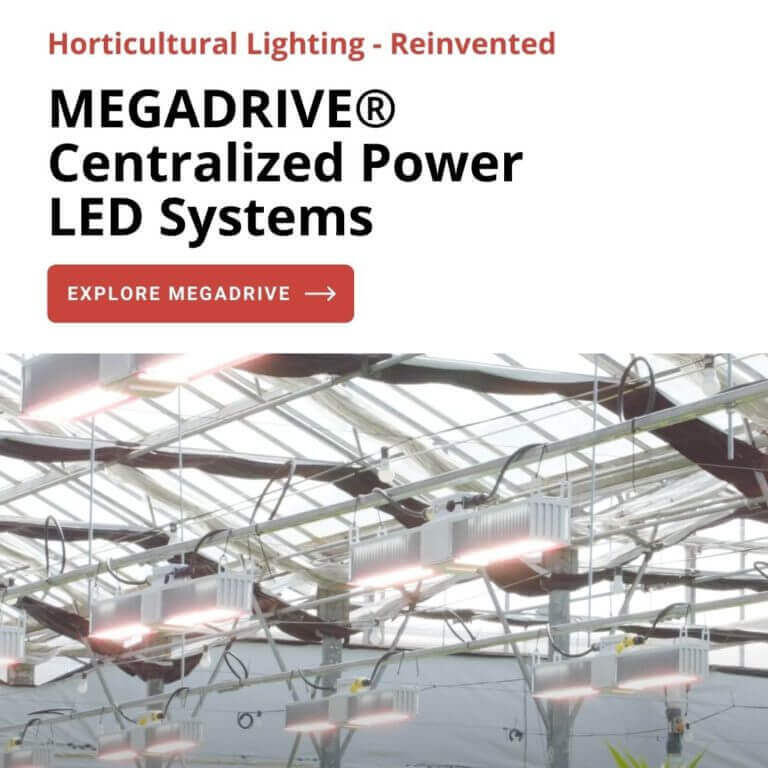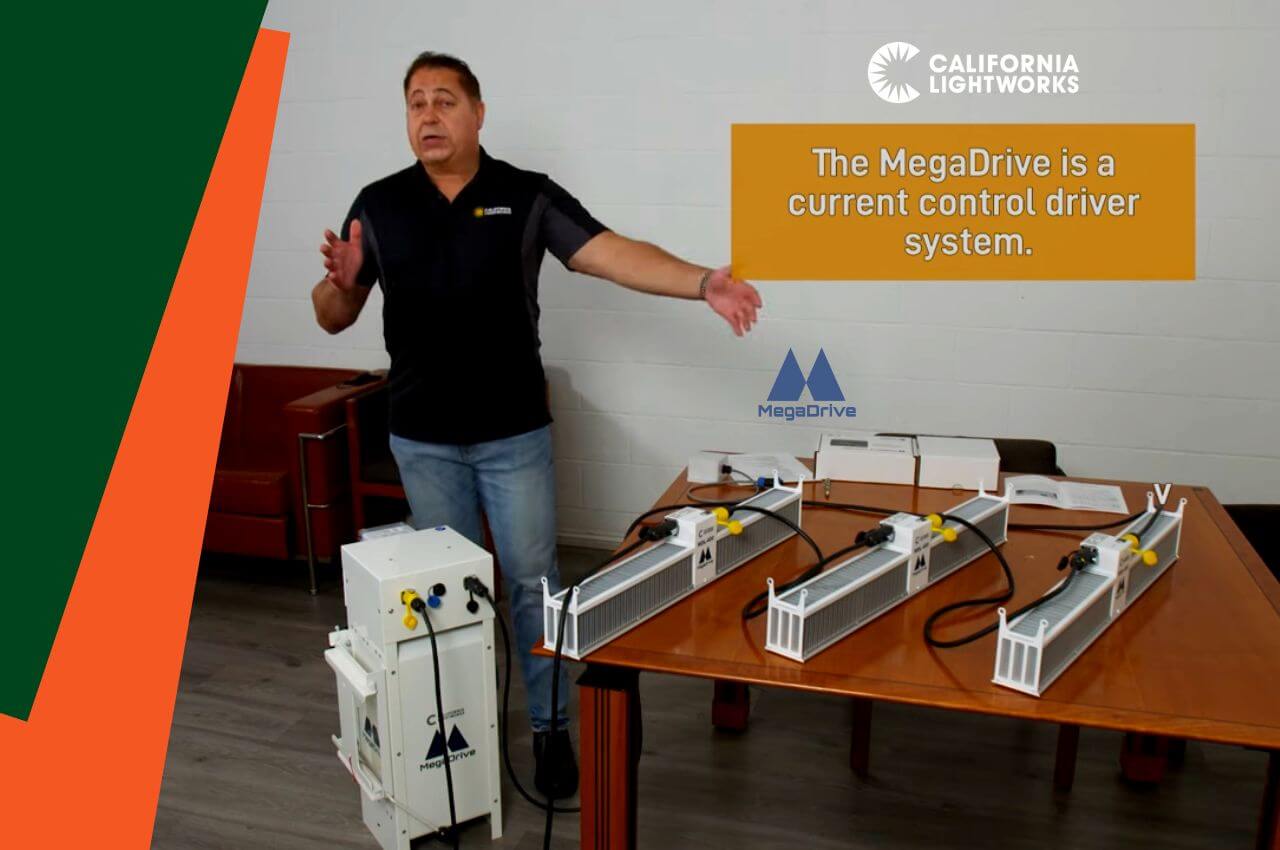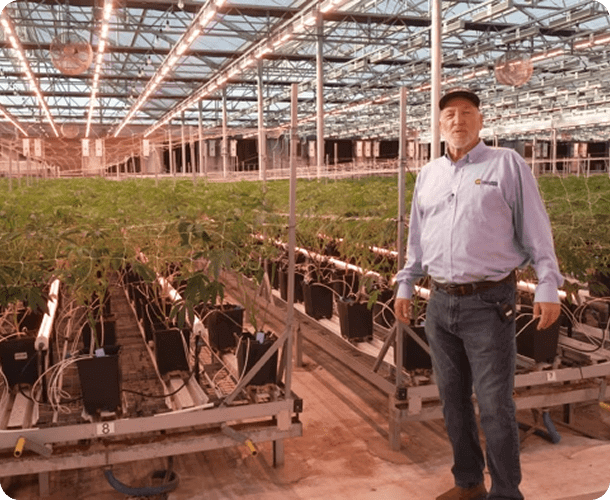If you are familiar with LED lighting at all, you have likely heard one of their biggest benefits is that they produce little heat. In fact, oftentimes LED advocates will go as far to say LEDs produce “zero heat.”
There is some validity to these claims. Due to how LED lights are designed, they are cool to the touch. They do not produce heat in the form of infrared radiation like HID lights do.
That being said, no light source produces zero heat.
The fundamental difference between LED lighting and other lighting options is that – with LEDs – heat is produced with the LED device itself. Spikes in internal operating temperatures will not negatively affect your growing environment. However, they can have an impact on the overall lifespan of your fixtures.
The best way to correct this issue is with a device called a heatsink. Most LED manufacturers will sell LED lights with a heatsink built-in. Below, we will go over what a heatsink is, how it works, and what are the best designs.
What Is Junction Temperature?
When researching heat sinks, you will definitely hear the word “junction temperature.” Simply put, junction temperature is the internal temperature of your LED lights. Semiconductors inside LED lights are what process and generate the light they produce. While semiconductors are a vital component of LEDs, they are what ultimately produces the heat inside the devices.
Thermal resistance – what determines the heat insulation of any given material, like a semiconductor – determines how hot your LEDs will get and how quickly. A higher thermal resistance can cause higher internal temperatures, which can wear your lights out. High power LEDs can easily reach high junction temperatures.
Myriad factors can affect junction temperature. Lights that are running 24 hours a day will naturally produce higher junction temperatures than lights that are sometimes turned off or significantly dimmed. The ambient temperature of the room itself can also cause fluctuations in junction temperature. While you can manage these factors, your lights ultimately need extra help for effective heat dissipation.
Thermal management – that is, controlling thermal resistance and therefore junction temperature – is vital for the longevity of LED lighting. This is where heat sinks come into play.
What Is A Heat Sink?
A heat sink is a metal block placed inside a grow light. Heat sinks absorb heat generated by LEDs and radiate it back into the surrounding air. This ensures junction temperature stays relatively stable and at an optimum temperature. This prevents overheating and is better for the overall life of your LED light.
There are different types of heat sinks on the market, often broken down by materials (e.g., aluminum heat sinks) or shape (i.e., finned heat sinks). The type of heat sink you need is largely contingent on the build of your LED light. We will go into more detail on this below.
What Materials Make the Best Heat Sink?
Most LED fixture fixtures use aluminum due to its excellent heat dissipation and easy manufacturing. Copper is also used in critical applications but is much more expensive.
Is the Weight of the Heat Sink Important?
In general, there more material used in a heat sink, the better the cooling efficiency. High quality LED grow lights will use heavy aluminum heat sinks, and this makes up most of the weight of the fixture. Cheap LED fixtures, especially from China, will use much less aluminum as this is quite expensive. These cheaper LEDs will run normally when first plugged in. However, the higher the operating temperature, the lower the life span of the LEDs. When selecting a high-quality grow light, weight matters!
LED lights rarely simply short circuit or burn out like HID lamps often do. An absence of a heat sink or very light weight heat sink is unlikely to immediately cause issues. In fact, you can often go through a few grow cycles without any perceptible problems. Your LEDs will run more or less as they should, and your fixtures will remain cool to the touch.
So, why do you need a heat sink then? High junction temperatures have a gradual but significant impact on your LED lights. In the long run, lights will function less and less effectively without proper thermal management. This can have subtle but substantial effects on your yields.
When junction temperatures are consistently too high, LEDs will emit fewer photons and shift their output wavelength. As a result, the light will no longer deliver its advertised spectrum. You can have your setup arranged perfectly and still not get your desired results.
In short, every grower – even hobby growers – should insure that heat sinks are effective and efficient in removing heat and increasing the life of your fixture. Most LED grow lights will come with a heat sink – but there are a variety of options which will affect the long term performance of the LED fixture.
How Do I Choose A Heat Sink?
There are many articles online about the calculations required to select a heat sink. While you can do it yourself, we do not recommend this.
Calculating the right size is dependent on factors such as your LED wattage, the number of LEDs you are powering, and the temperature of the ambient environment. However, this just determines the size of your heat sink. You also have to consider factors such as shape and finish.
It gets complicated fast. Choosing a heat sink is best left to professionals. An improperly fitted heat sink will be ineffective at managing thermal temperature, which will cause the same long- term problems as not having a heat sink at all.
Fan or No Fan?
Many heat sinks function with no fans and no moving parts (passive cooling). This is a valid option as long as the surface is large enough and the weight of the heat sink is adequate to keep the LEDs cool. Caution: This is where many cheap LED fixtures save on cost. Another option is to use a fan to cool the heat sink (active cooling). This is the solution used with most computers and high heat electronic applications. This can be a very viable option where the heat is high due to high output LEDs and the surface area cannot be large enough to cool the LEDs. In these cases, make sure the fans have the same life span as the LEDs. At California Lightworks, we use both active and passive cooling solutions to insure the highest performance and the longest life spans.
In short – with a good LED and a proper heat sink with or without fans, you should get a long-life fixture that will perform for years without losing light output or shifting spectrum.
Heat Sinks: The Bottom Line
Heat sinks are a vital part of a good LED lighting system. LED lights do not produce external heat, but no light source is heat free. The junction temperatures of LED lights can cause them to lose efficiency over time. This reduces your light’s overall lifespan and can negatively affect your final yield.
At California Lightworks, we strive to ensure growers at all levels have the tools they need to thrive. If you have any questions about heat sinks – or any other lighting-related issues – do not hesitate to reach out here.





